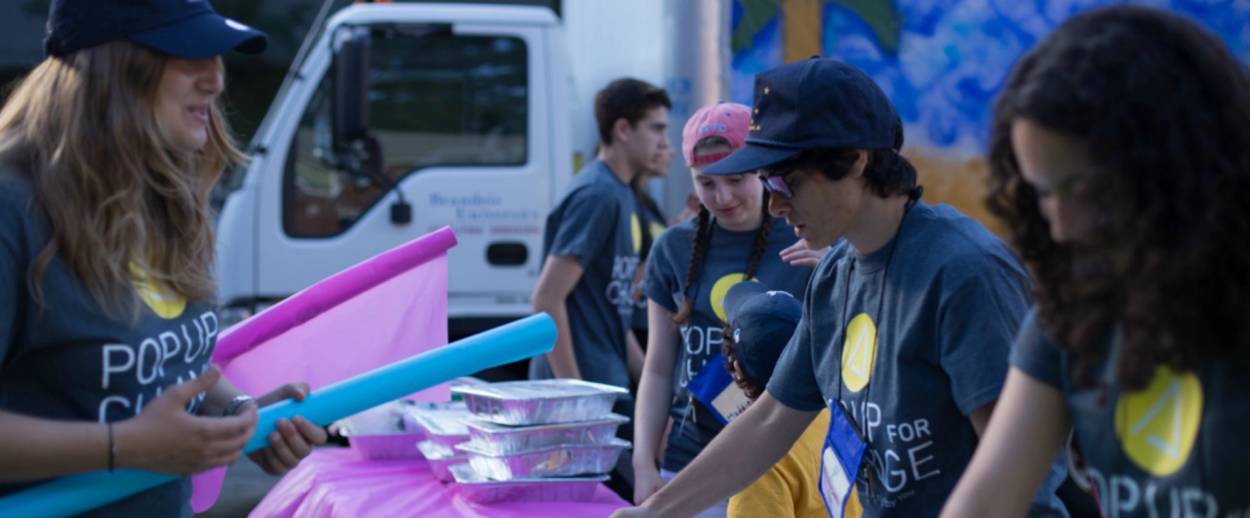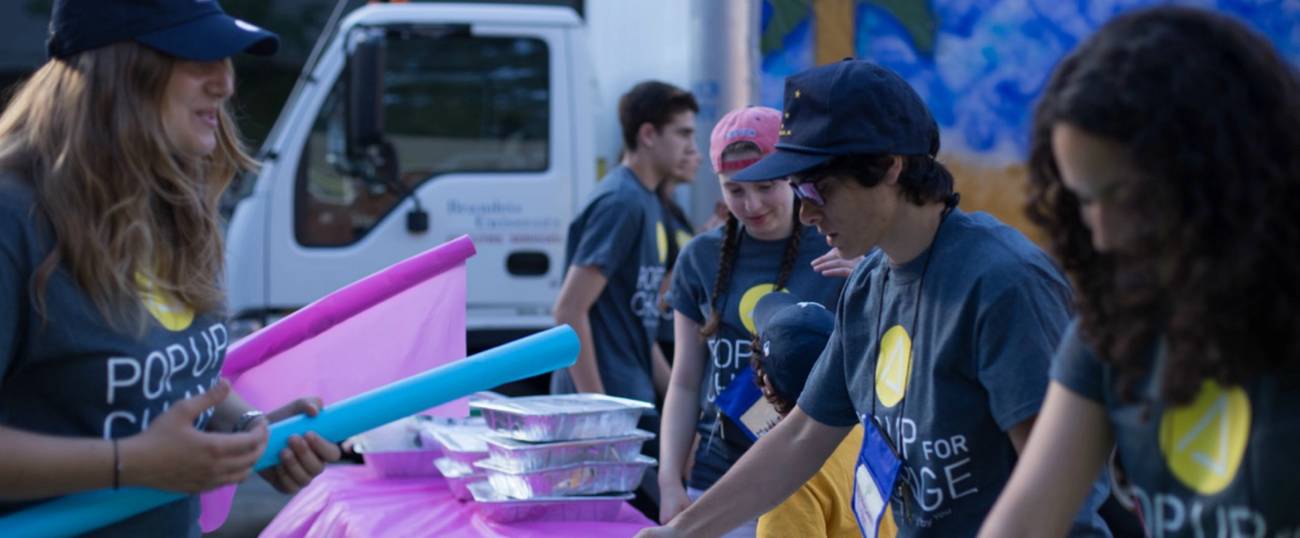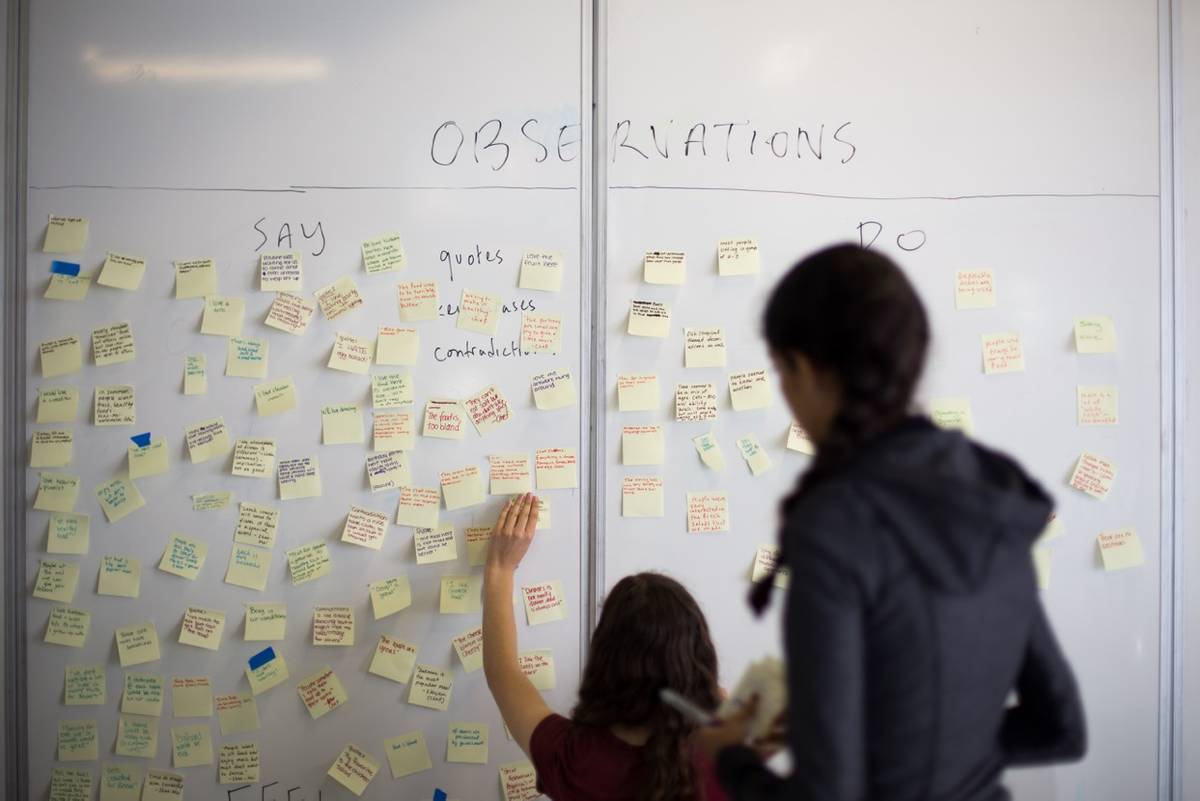A Pop-up Supper Club, Made Up of Teenagers Inspired by ‘Tikkun Olam,’ Feeds NYC’s Elderly
The PopUp For Change program provides youths with the opportunity to think about social justice issues—and foment change




News flash: America’s youth are not dimwitted Lochtes, nor are they the sullen, eye-rolling Negasonic Teenage Warheads glued to their iPhones so often portrayed in the media. Many are engaged, thoughtful, and community-spirited. This week, for instance, kids from all over New York City are working hard to create a swanky supper club for elderly Lower East Side residents.
PopUp For Change is a project for teenagers run by artist and educator Tirtzah Bassel. Bassel is interested in “design thinking,” also known as human-centered design. “It’s a creative approach to design that focuses on learning about users’ needs, doing prototypes, and getting feedback from users,” Bassel said. “It can offer something crucial to teenagers: Skills that will be useful when they hit the world, the job market. It’s not about building a static body of knowledge, it’s about developing the creativity to deal with a rapidly changing reality.”
PopUp For Change uses this design philosophy, interwoven with the Jewish concept of tikkun olam, to work with teenagers on social justice issues. Last year, kids built a PopUp food truck parked in a low-income housing community in Waltham, Mass., providing both a social hub and access to fresh, affordable produce. Kids interviewed residents about their needs, refined their design thinking based on input from the community, brainstormed solutions, and worked with chefs and designers. “We talked to people about their backgrounds,” Bassel said. “There were over 100 countries of origin represented, so we asked: What kinds of foods were made in their home countries? What was the cultural significance of food to them? What did they miss? We realized it was important to have communal events in a public space, to have activities for kids and parents together. So it became more than a food truck—it was a hub. The truck had a beach-type theme, and the truck became an interactive art project with a mural that kids and adults created together. We set up games and a dance party.”

PopUp For Change was originally based at Brandeis University, where kids also worked on PopUp fashion boutiques and makerspaces. This summer, it’s a two-week social justice program at the 14th Street Y. The supper club designed by the kids will serve the 80 or so seniors who attend the subsidized dinner at Sirovich Center in the East Village. “The dinner at the senior center wasn’t well-attended and wasn’t very social—people would come by themselves, eat and leave,” Bassel said. “Our goal was to create a communal experience with meaning.” Teenagers have created a budget, decorated the space, done the cooking (after taking lessons from chef and Gefilteria founder Liz Alpern, whose book The Gefilte Manifesto: New Recipes for Old World Jewish Foods will be out September 13), and provided entertainment. The dinners will continue through August 26.
“Design thinking starts with empathy, and developmentally, it’s a great time for teenagers to be honing that skill,” Bassel said. “It gives them tools to look beyond themselves. We had Shabbat dinner together, and talked about what social justice is, particularly here on the Lower East Side where there is so much history, with the Yiddish-speaking labor organizers. We used Jewish texts and narratives as a framing tool to think about social justice. We look at Maimonides’s ladder of charity and contrast it with the approach of Clara Lemlich; Maimonides focuses on individual responsibility, and Lemlich and her fellow activists focused on the entire system and broader society. Our program is open to non-Jewish participants, but they’re also interested in these texts and concepts.”
I spoke to Romy, 15, one of the program’s enthusiastic participants. “We’ve studied what supper clubs are, and learned that the food is not the main element,” he told me. “It’s about the atmosphere—the setting, the entertainment. One of our design challenges is that the room has stark white walls—it’s not the most inviting place. Lighting is also large factor. They have stark white lights, so we’re creating a warm glow, less harsh. This program only lasts two weeks, but our hope is that the changes we implement will have an extended benefit that can keep going. As part of our design process, we’re hoping that it’s not going to be a momentary benefit—it will be a sustainable benefit.” Romy feels that what he’s learning in the PopUp For Change program dovetails with Jewish values. “My parents are Israeli, and I’m first generation American,” he told me. “We’re not religious. But my parents pass on a variety of moral lessons tied into Jewish culture and traditions, and this program re-conveys those lessons and helps build a sense of community that I myself don’t have in my day to day life and school. I’ve loved building my own community here.”
Gloria, also 15, was drawn to the program for the chance to work with seniors. “I used to volunteer with seniors in a hospital,” she said. “I love hearing their stories, and I feel an obligation to give back to them since they once took care of us. I’m very close to my grandma, who lives in Nigeria—that’s pretty far away. I call her—she doesn’t have email. Doing the PopUp program, I really felt a connection with this one lady named Sibyl. She was a painter, and she was so excited to tell her stories and the stories of how and why she paints. It was cool to meet someone so different from what the public thinks old people are—she was not old or cranky.”
Gloria is also interested in the culinary challenge. “Interviewing the seniors, we keep hearing that the food is bland, but they can’t have too much sodium or sugar, and most of them don’t like spicy things. So we’re exploring different spices, ones I might not have thought of. Some of the seniors who don’t eat at the center suggested some restaurants that they like. There’s one called Angelica near the center that’s organic—I’d like to go over there and see what they do to make the food taste good.” She loves seeing the way brainstorming comes to fruition. “It’s amazing the way our pieces of paper and Post-Its and models become something much greater. Seeing our ideas come to life…it’s great.”
Marjorie Ingall is a former columnist for Tablet, the author of Mamaleh Knows Best, and a frequent contributor to the New York Times Book Review.